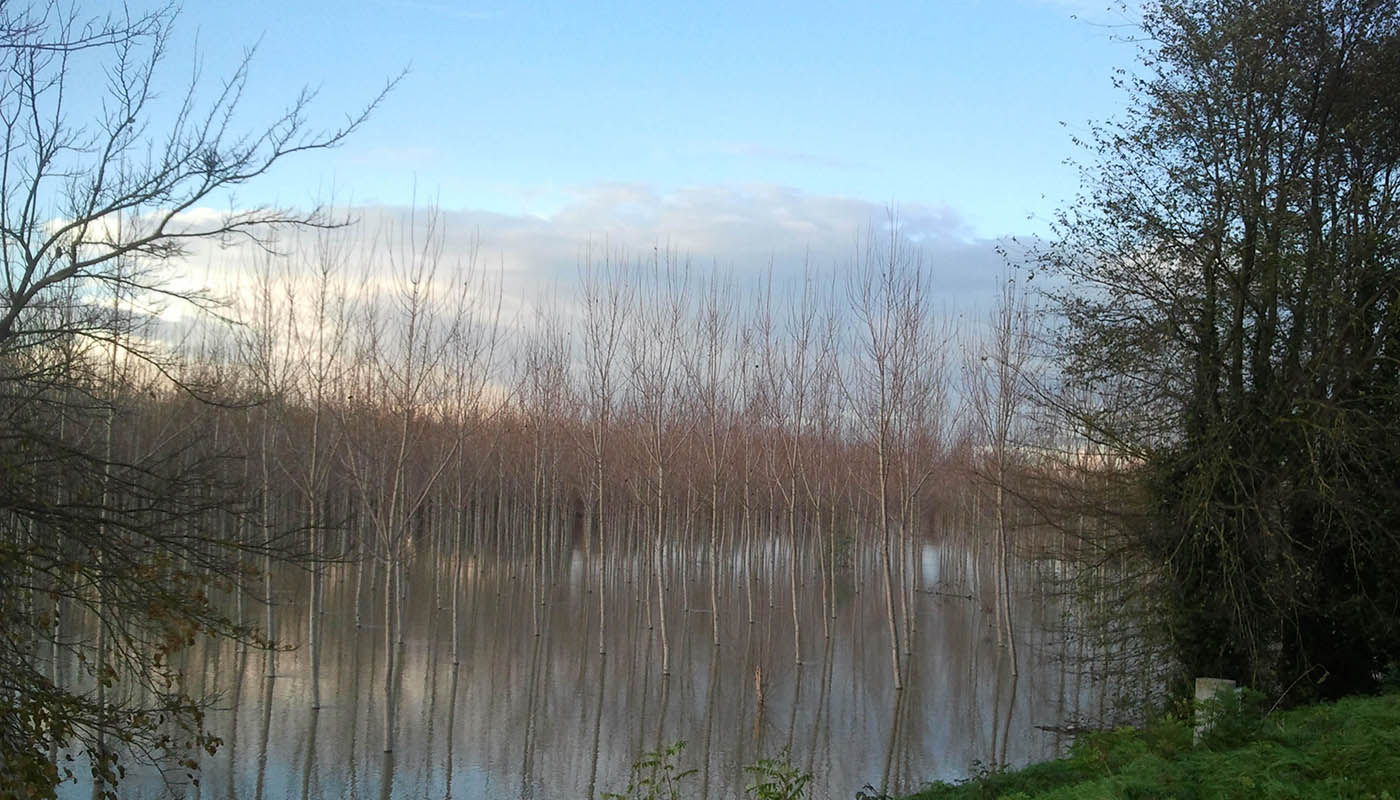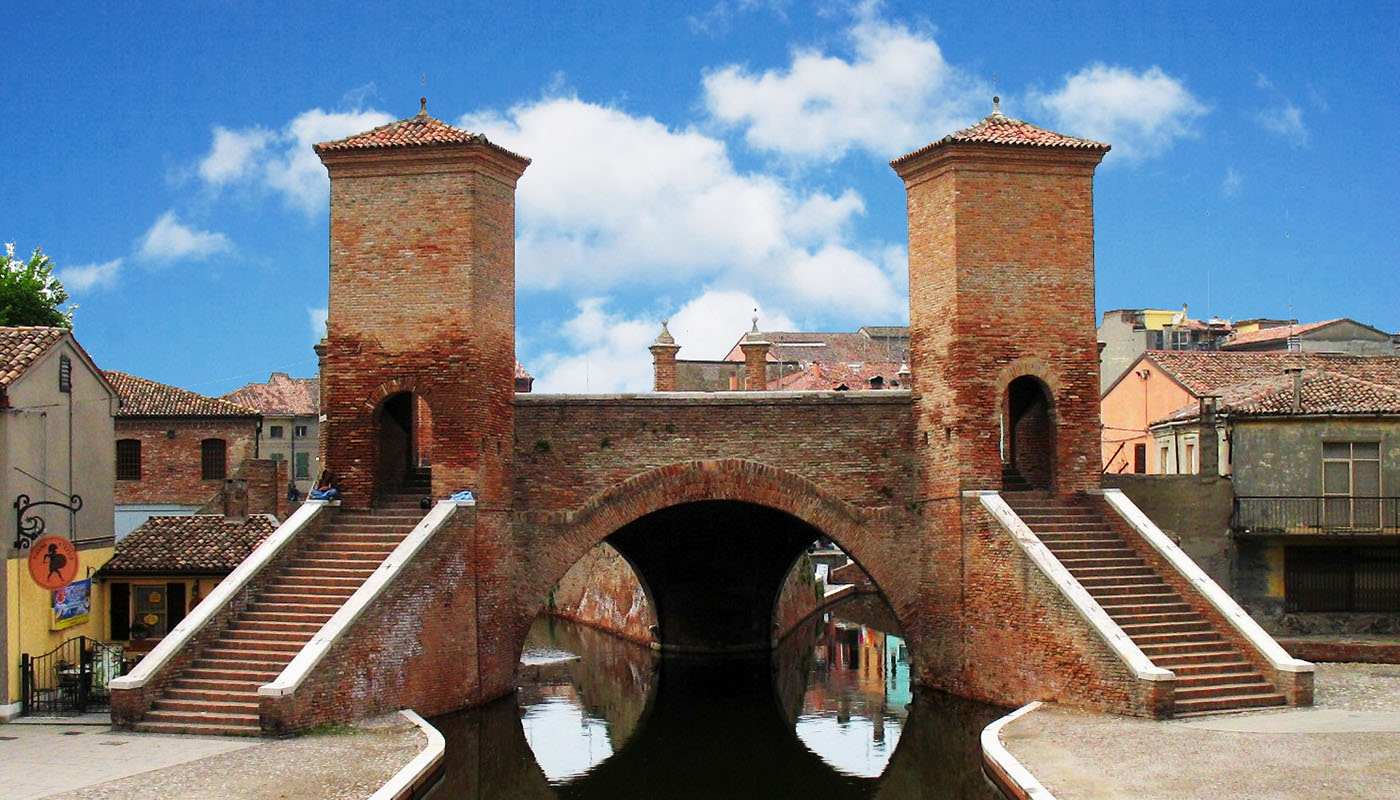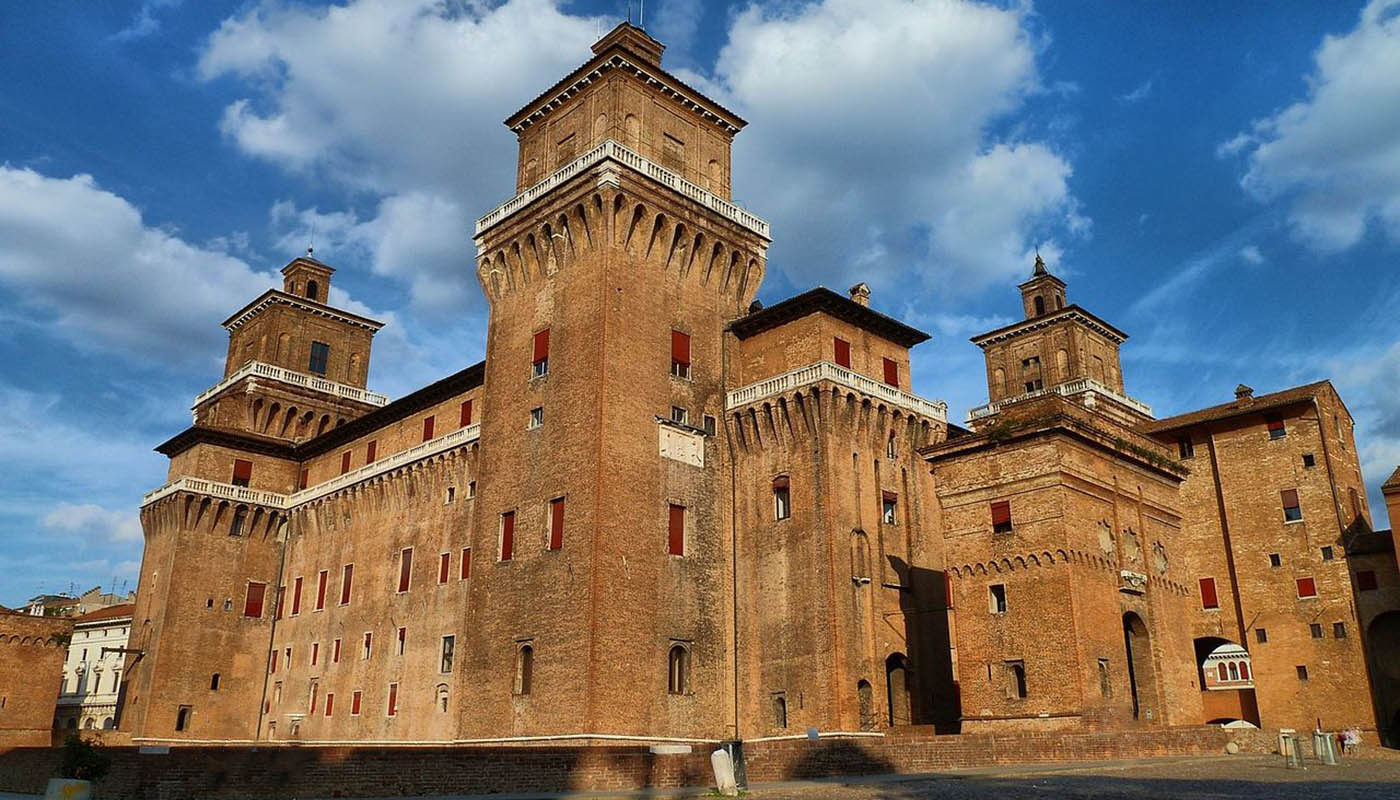Travel in the quiet
WHERE THE PO MEETS THE SEA



The Regional Park of Po Delta
The Parco regionale del Delta del Po dell'Emilia-Romagna (Regional Park of Po Delta), established in 1988, is a protected area that covers about 54.000 hectares of Emilia-Romagna Region, extending between the Province of Ferrara and the Province of Ravenna.
In 1999 the Park entered in the list of World Heritage compiled by UNESCO and in 2015 it was included in the MAB program, as a biosphere reserve.
In the Park, thanks to the variety of environments, there are more than 1,000 species of plants and 374 species of vertebrates, of which 297 species of birds.
The area is also populated by reptiles, amphibians and fish.
The Park includes within it, as well as flora and fauna, historical monuments and especially important sights: the Pomposa Abbey, consecrated in 1026; the city of Comacchio; the house where they stopped Joseph and Anita Garibaldi in August 1849; the parish church of San Giorgio, in Campotto; the Basilica of Sant'Apollinare in Classe, consecrated in 547.
There is not only a way to visit the Delta, on foot, bicycle, horseback, canoe and boat, they are just some of the many activities to discover the beauty of this area.
We can remeber the annual event "SPRING SLOW", which offers a full calendar of events, tours (many free) that allow you to visit all the beauties of the Po Delta Park. For more informations: www.primaveraslow.it
The Parco regionale del Delta del Po dell'Emilia-Romagna (Regional Park of Po Delta), established in 1988, is a protected area that covers about 54.000 hectares of Emilia-Romagna Region, extending between the Province of Ferrara and the Province of Ravenna.
In 1999 the Park entered in the list of World Heritage compiled by UNESCO and in 2015 it was included in the MAB program, as a biosphere reserve.
In the Park, thanks to the variety of environments, there are more than 1,000 species of plants and 374 species of vertebrates, of which 297 species of birds.
The area is also populated by reptiles, amphibians and fish.
The Park includes within it, as well as flora and fauna, historical monuments and especially important sights:
- the Pomposa Abbey, consecrated in 1026;
- the city of Comacchio;
- lthe house where they stopped Joseph and Anita Garibaldi in August 1849;
- the parish church of San Giorgio, in Campotto;
- the Basilica of Sant'Apollinare in Classe, consecrated in 547.
There is not only a way to visit the Delta, on foot, bicycle, horseback, canoe and boat, they are just some of the many activities to discover the beauty of this area.
We can remeber the annual event "SPRING SLOW", which offers a full calendar of events, tours (many free) that allow you to visit all the beauties of the Po Delta Park. For more informations: www.primaveraslow.it
Around the Tenuta la Confina
Comacchio
The Little Venice
The city of Comacchio, one of the biggest center of the Po Delta under the scenic and historical aspect, it was born about 2000 years ago.
Sort by the union of thirteen small islands, it had to direct its development, both on the planning level and on the economy, on the element of water; from that probably comes the epithet Little Venice.
It has numerous monuments and sights, including the Cathedral dedicated to San Cassiano.
The defining element of the Comacchio historical center are however the bridges, as the ancient town stood on the original small islands, connected each other.
Comacchio is also known for its seven beaches, including the Lido di Spina, which houses our structure.
Among the main events we note the Eel Festival (Sagra dell'Anguilla), which each year attracts many visitors; for more informations: www.sagradellanguilla.it.
Pomposa Abbey
One of the most visited cultural and religious sites in Emilia-Romagna.
The Pomposa Abbey, located in Codigoro in the province of Ferrara, it dates from the Ninth Century and is one of the most important of all Northern Italy.
It was consecrated in 1026 by Abbot Guido.
Until the Fourteenth Century the Abbey enjoyed properties, both in the surrounding lands (including a salt in Comacchio), and in the rest of Italy, thanks to donations; it met then a slow decline, due to geographic and environmental factors, such as malaria and waterlogging in the area, also caused by the diversion of the riverbed of the Po.
During the Middle Ages, it had a great importance for the preservation and dissemination of culture, thanks to the scribe monks living there. In this Abbey the monaco Guido d'Arezzo invented modern musical notation and stared at the names of the musical notes.
In 1653 Pope Innocent X suppressed the monastery. At the end of the Nineteenth Century, the property passed to the Italian State and is currently managed by the Museums of Emilia Romagna.
Inside the Abbey, we can admire frescoes, mosaics in the Church as well as religious-archaeological finds kept in the Ecclesiastical Museum.
Ravenna
City of art and culture
Ravenna is the largest and historically most important city of Romagna; the territory of its municipality is the second in Italy for area, exceeded only by that of Rome, and includes nine beaches of the Riviera. In its history, it was capital three times: of the Western Roman Empire (402-476), the Kingdom of the Ostrogoths (493-553) and the Byzantine Exarchate (568-751).
Thanks to this illuminated past, the complex of the early Christian monuments of Ravenna was included by UNESCO in 1996, in the list of Italian sites Heritage of Humanity, as a serial site "Early Christian Monuments of Ravenna".
It was equipped in the Sixth and Seventh Centuries, and in the Upper and Middle Ages, of many religious buildings, some of which still remain today.
Its long history, witnessed by the numerous architectural structures (churches, basilicas and civil architecture), and the cultural traditions that developed in it, make Ravenna a place of indisputable charm.
Campotto Oasis
An immersion in the green
The term "Valli di Campotto" indicates a part of the Regional Park of the Po Delta, which falls in the territory of the city of Argenta, near Ferrara; the name "Valli di Campotto" comes from Campotto, the southernmost village in the municipality of Argenta, included in the Park.
The real Campotto Oasis (or even "Cassa di Campotto") is the expansion of the Idice stream; it was built in modern times, following the reclamation operated in those areas, that was in the past a marshland. It is one of the few areas in Italy where a variety of bird called "mignattino piombato" nests.
In this area, we can find an old place of worship: the Church of St George, founded in 569 by the Archbishop of Ravenna. It is one of the oldest churches in Emilia-Romagna. Today the area surrounding the building falls within the territory of the province of Ferrara and the church is therefore the oldest place of worship in the province.
For more info: www.ferraraterraeacqua.it
Ferrara
Renaissance city
Ferrara is the heir of an important cultural heritage of the Renaissance, a time when it was the capital of an independent duchy under the rule of the Este family, and had developed into an artistic and academic center of Europe, where they have lived important personalities.
It is also a city of great urbanistic interest as during the Renaissance there the first great designs of modern European history were created, the most notorious of which is the Herculean Addition, thanks to which Ferrara is considered by scholars to the first modern city d'Europe.
UNESCO gives it the title of World Heritage Site for the first time in 1995 as the city of the Renaissance and later, in 1999, received further recognition for the Po Delta and the Este Delights.
The city hosts important cultural centers: the National Art Gallery of Palazzo dei Diamanti, the National Archaeological Museum, the Museum of the Risorgimento and the Resistance, the Italian Judaism and the Shoah Museum and many other museums.
For more info: www.emiliaromagnaturismo.it
